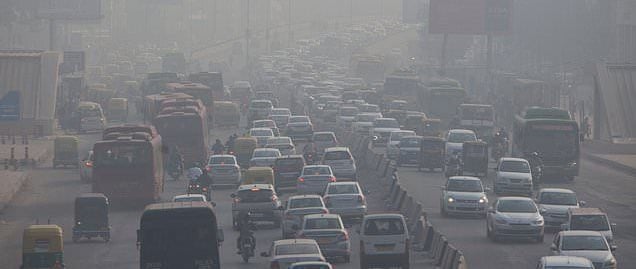Air Pollution Solutions Falling Short
A Call for Comprehensive Action in New Delhi
HEALTH
Shahbaz Ahmed
12/21/20243 min read


Air pollution in New Delhi has become a persistent and deadly crisis, earning the city the infamous title of one of the world’s most polluted capitals. Despite numerous efforts to combat the issue, current measures have largely proven ineffective, and the situation continues to jeopardize the health and well-being of millions. The failure of initiatives like outdoor smog purifiers, smog guns, and drones underscores the urgent need for a comprehensive, science-backed approach to address this escalating problem.
The Ineffectiveness of Current Measures
Several technological and policy interventions have been introduced in recent years to tackle New Delhi’s air pollution. However, these measures have fallen short for various reasons:
Outdoor Smog Purifiers:
These large-scale air purifiers were installed in several locations across New Delhi with the aim of filtering pollutants in the immediate vicinity. However, their operational capacity is limited to small areas, and their impact on the overall air quality has been negligible. The purifiers often remain inactive, further diminishing their utility.
Smog Guns:
Smog guns, which spray water droplets to settle dust particles, have been deployed at construction sites and public spaces. While they provide momentary relief in specific areas, their contribution to reducing the broader pollution levels is minimal.
Drones for Air Quality Management:
Drones equipped with sensors and spraying mechanisms were introduced to monitor and mitigate air pollution. However, logistical challenges and the scale of pollution in New Delhi have limited their effectiveness.
The Health Crisis at Hand
New Delhi’s air pollution is not just an environmental issue—it’s a public health emergency. Prolonged exposure to high levels of pollutants like PM2.5 and PM10 has severe consequences:
Respiratory Illnesses: Chronic conditions such as asthma, bronchitis, and other respiratory diseases are on the rise, particularly among children and the elderly.
Cardiovascular Problems: Studies have linked air pollution to an increased risk of heart attacks, strokes, and hypertension.
Reduced Life Expectancy: According to reports, residents of New Delhi could lose up to 10 years of their lives due to prolonged exposure to polluted air.
Economic Impact: The health crisis translates to a loss of productivity, increased healthcare costs, and a drag on economic growth.
Why Are Current Efforts Failing?
Fragmented Policies:
Measures to combat air pollution often lack coordination between different agencies and levels of government, resulting in inconsistent implementation.
Short-Term Solutions:
Many initiatives focus on temporary relief rather than addressing the root causes of pollution, such as vehicle emissions, industrial discharge, and crop burning.
Lack of Public Awareness:
Insufficient efforts to educate the public about pollution and its sources hinder community participation in mitigation efforts.
Insufficient Funding:
The resources allocated to combating air pollution are often inadequate for implementing large-scale, impactful solutions.
The Way Forward: Comprehensive Solutions
Experts emphasize the need for a holistic and long-term approach to tackle air pollution effectively. Here are some key recommendations:
Stringent Emission Controls:
Enforcing stricter emission standards for vehicles and industries is crucial. The transition to cleaner fuels and electric vehicles should be accelerated.
Urban Planning and Green Spaces:
Expanding urban greenery, such as parks and tree-lined streets, can help absorb pollutants and improve air quality.
Improved Public Transport:
Enhancing public transportation systems and encouraging their use can reduce the number of private vehicles on the road, cutting down emissions.
Crop Residue Management:
Providing farmers with alternatives to stubble burning, such as machinery for residue management, can address one of the major contributors to seasonal pollution.
Integrated Monitoring Systems:
Establishing a unified air quality monitoring system with real-time data can improve accountability and inform targeted interventions.
Public Awareness Campaigns:
Educating citizens about pollution sources and prevention strategies is essential for building community engagement and compliance.
The Role of Technology and Innovation
While many current technological solutions have failed, innovation remains a critical component of combating air pollution. Future initiatives should focus on:
Advanced Air Filtration Systems: Large-scale systems capable of covering wider areas effectively.
AI and IoT for Monitoring: Using artificial intelligence and Internet of Things devices to predict pollution trends and optimize response strategies.
Renewable Energy Adoption: Accelerating the shift to renewable energy sources to reduce dependence on fossil fuels.
A Shared Responsibility
Addressing air pollution requires collective action. Governments, businesses, and citizens must work together to create sustainable solutions. Policymakers need to prioritize air quality in development agendas, industries must adopt cleaner practices, and individuals should contribute by reducing waste, conserving energy, and using public transport.
Conclusion
The current efforts to combat New Delhi’s air pollution crisis have highlighted the limitations of piecemeal solutions. It’s time to adopt a comprehensive and coordinated strategy that addresses the root causes and leverages innovation for long-term impact. By taking bold and decisive action today, New Delhi can pave the way for a cleaner, healthier future for its residents and set an example for other cities grappling with similar challenges.
